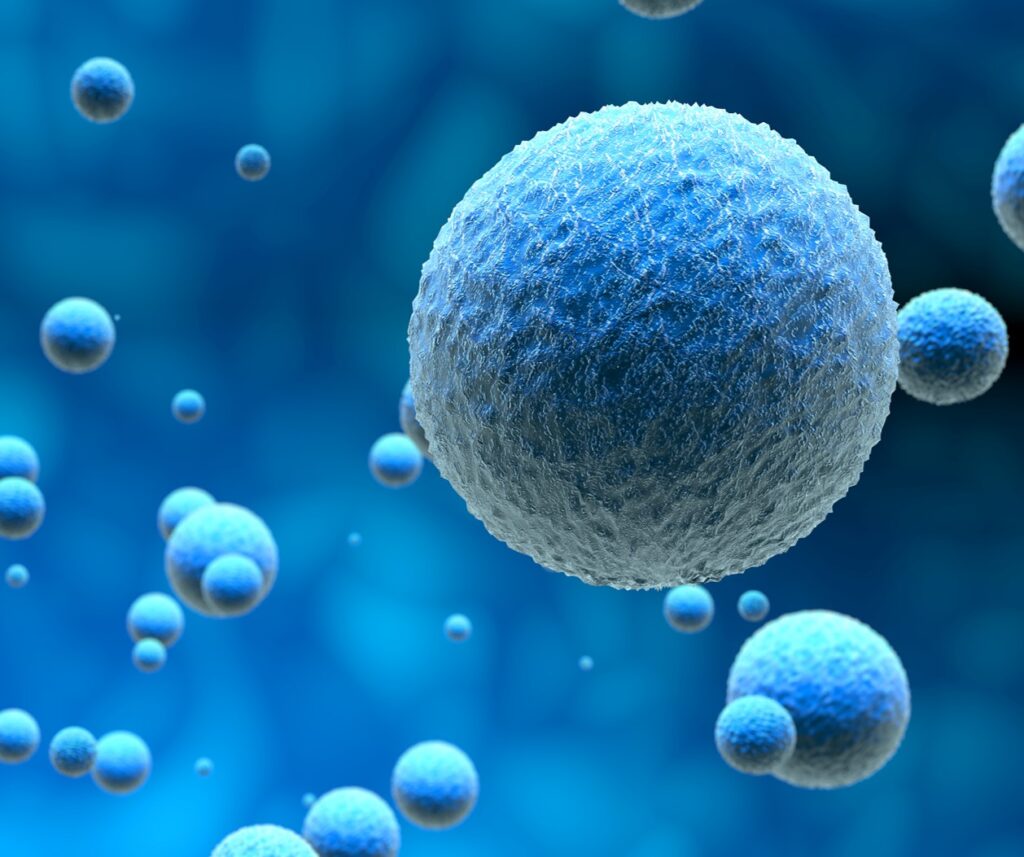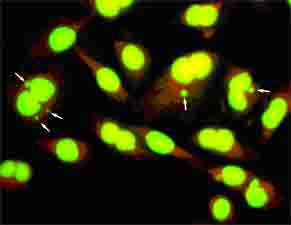Identify potential liability issues in early stages of drug discovery
Toxicity and clinical safety are one of the leading causes of drug candidate failure in preclinical and clinical testing stage, and also the major reason for the withdrawal of approved drugs from the market. For example, hepatotoxicity and cardiotoxicity result in the most severe problems in drug development and are often the cause of drug withdrawals. To reduce attrition of drug candidates during clinical development, toxicology and risk assessment should be an integrated part of the early drug discovery process.

WuXi Biology offers comprehensive services at the target and cellular level to assess drug safety profiles in the discovery process. With our expertise and cutting-edge technologies, we will provide high quality and cost-effective data with fast turnaround. Applying these assays to your drug discovery and development programs will help to avoid costly late-stage failures.
Off-target Profiling
WuXi Biology Mini Safety Panel | WuXi Mini 44
A primary safety panel, which is designed to identify compounds with the highest risk because it contains targets associated with the most serious ADRs. This panel is recommended for use early in drug discovery stage for early hazard identification.
The 44 selected targets are recommended by four major pharmaceutical companies (Bowes J. et al. Nat Rev Drug Discov. 2012), including 24 GPCRs, 8 ion channels, 7 enzymes, 3 monoamine transporters and 2 nuclear hormone receptors.
GPCRs
Adenosine receptor
Adrenergic receptors
Alpha1A
Cannabinoid receptor
Cholecystokinin receptor
Dopamine receptors
Endothelin receptor
Histamine receptor
5-Hydroxytryptamine receptor
Muscarinic receptor
Opioid receptor
Vasopressin receptor
Channels
Ca2+Channel
K+Channel
Na+channel
Serotonin
Nicotinic
Glutamate
Transporters and NR
Transporter DAT / 5HTT / NET
Steroid Nuclear Receptors
Enzymes
Protein-Tyrosine Kinase -CTK
Phosphodiesterase
Cyclooxygenase
Monoamine & NRT Synthesis & Metabolism
WuXi Biology Second Safety Panel | WuXi Extra 54
A panel of additional 54 targets. This more extensive panel contains such targets that have the combination of either low-hit-rate/high-risk ADRs or high-hit-rate/ lower-risk ADRs. This panel is ideal for broad characterization of a limited number of compounds for lead selection, provides data to drive SAR for lead optimization.
The 54 selected targets include 26 GPCRs, 5 ion channels, 18 enzymes, 3 nuclear hormone receptors and 2 transmembrane targets.
GPCRs
5-Hydroxytryptamine receptor
Adenosine receptor
Adrenoceptor
Bradykinin receptor
Cholecystokinin receptor
Dopamine receptor
PGE2 receptor
Platelet-Activating Factor
Endothelin receptor
Histamine receptor
Muscarinic receptor
Tachykinin receptor
Vasopressin receptor
Channels
ATP-sensitive inward rectifier potassium channel
Cav1.2 (L-type) Rat Calcium Ion Channel
Glutamate ( Non-Selective) Rat Ion Channel
NR
Estrogen receptor
Peroxisome proliferator activated receptor gamma
Progesterone receptor
Transmembrane (Other)
Sigma receptor
Enzymes
Angiotensin converting enzyme
Cholinesterase
Serine/threonine-protein kinase
Serine protease
Monoamine oxidase
Histone Deacetylase
INSR Tyrosine kinase
Rho-associated protein kinase
Vascular Endothelial Growth Factor Receptor
Phosphodiesterase
WuXi Biology Full Panel | WuXi 98
The combination of WuXi Mini 44 and WuXi Extra 54.
In Vitro Safety Pharmacology Profiling
Comprehensive in vitro Off-target Screening Services
Genotoxicity
Bacterial Reverse-Mutation assays (4 Salmonella strains and E. coli WP2 uvrA)
Our assays are to evaluate test articles routinely in Salmonella typhimurium (his-) strains TA98, TA100, TA1535, and TA1537 and Escherichia coli WP2 uvrA(trp-). When scientifically justified, TA102, TA1538 or an alternative bacterial strain may be used to evaluate selected test articles. Plate incorporation and pre-incubation assays are currently available.
Micronucleus Test
Micronuclei are small nuclei, separate from the main nucleus, that are formed during cell division when whole chromosomes or chromosome fragments are not incorporated into the main nucleus during formation nuclear membrane. Micronuclei formation is a marker of double-stranded DNA breaks (chromosome fragments) or damage to the mitotic apparatus (whole chromosomes). The cytokinesis-block micronucleus assay provides a method to easily identify those cells that have divided. The assay is used to detect clastogens and aneugens in Chinese hamster ovary (CHO) cells. Cytochalasin B (CYB) is used to block cytokinesis.

Cardiac Toxicity
The human ether-a-go-go-related gene (hERG) encodes the pore-forming potassium (K+) channel subunit of IKr, one of four K+ currents that underlie cardiac action potential repolarization during each heart beat. Drug-induced inhibition of IKr prolongs the QT interval, which could further leads to potentially lethal cardiac disorder. hERG channel patch-clamp testing currently becomes a critical component of drug safety evaluation.
Hepatotoxicity
Hepatotoxicity is a common cause of failure in new drug development. Primary hepatocytes are the preferred tool to get key information of the tested compound. The culture condition has been optimized in order to maintain high enzyme activity levels for the cell-based assay. We are able to evaluate several hepatotoxic end points in a short time frame maximizing the use of hepatocytes. For hepatotoxicity study, we provide assays including:
- Hepatocyte cell viability: The cell viability of primary hepatocytes was detected.
- Steatosis and phospholipidosis: Steatois and Phospholipidosis are characterized by the excessive intracellular accumulation of lipids. It is well known that a large number of cationic amphiphilic drugs have the potential to induce steatosis or phospholipidosis. WuXi Biology has established a rapid and robust high throughput screening method for detecting compounds with steatosis or phospholipidosis-inducing potential.
- Enzyme induction: The inducibility of some enzymes, e. g. CYP450s (CYP3A4 CYP1A1, CYP, CYP2B6, CYP2C9, CYP2C19 and CYP2E1), UGTs and drug transporters (MDR1and MRP2) is one of the major concerns for drug development in the pharmaceutical industry. It can lead to toxicity or reduced efficacy due to drug-drug interactions if the metabolism of one drug is altered by co-administration of another. To investigate the CYP induction potential of a drug candidate, primary human hepatocytes (plateable cryopreserved or fresh) or fresh rat hepatocytes are exposed to the test compound over a three-day period and subsequently, enzyme activity or gene expression level are monitored.
Mitochondrial Toxicity
Mitochondrial dysfunction has been reported to be a major cause of drug withdrawal from the market – Black Box warnings. Identification of mitochondrial dysfunction in early stage of NCE characterization is now crucial for avoiding late-stage attrition during drug development. The limitation of traditional methods for assessing mitochondrial dysfunction has discouraged routine evaluation of mitochondrial function. WuXi Biology has implemented fluorescent oxygen-sensitive probes to measure oxygen consumption as well as mitochondrial membrane potential. For mitochondrial toxicity studies, WuXi Biology provides the follows assays:
- Fluorescence-based oxygen consumption assay
- Membrane potential transition (MPT)
Cytotoxicity
WuXi Biology provides a panel of cell viability tests to screen and select potential drugs and lead compounds for further development. Cell viability can be evaluated via the measurement of cytoplasmic enzyme release (e.g. LDH), cellular ATP content, and mitochondrial metabolism (XTT). Our cells used for cytotoxicity screening include, but are not limited to, several primary cells (hepatocytes, astrocytes, neuron and endothelial cells) and human cell lines (Hep G2).
Drug-Drug Interaction
Besides using primary hepatocytes for enzyme induction, we provide several high throughput assays for human specific drug-drug interaction studies. WuXi Biology has developed robust, fast and highly sensitive assays which also could be scaled up with high quality.
Human CYP3A4 induction cell based assay
Human CYP3A4 accounts for around 40% of total P450 in human liver and metabolizes over 50% of drugs used in clinic, so CYP3A4 is the most important–drug metabolizing enzyme. Pregnane X receptor (PXR) is a nuclear hormone receptor principally responsible for the induction of cytochrome CYP3A4. Characterizing the induction potential of drug candidates has become an important tool for drug discovery and development in the pharmaceutical industry. Based on this mechanism, we have established a CYP3A4 cell-based induction assay. This assay has been fully validated by 10 reference compounds and exhibits high sensitivity with great compatibility with high volume screening and SAR optimization.
Since CYP3A4 is regulated by human pregnane X receptor(hPXR) through the promoter elements of CYP3A4, a stable cell line expressed hPXR and the CYP3A4 promoter fused to a luciferase gene has been generated and fully validated by WuXi Biology to facilitate our assay service.
Human CYP1A2 induction cell based assay
CYP1A is a subfamily of cytochrome P450 enzymes involved in the metabolism of numerous therapeutic drugs and in the bioactivation of procarcinogens to mutagens, such as cigarette smoke, omeprazole, methylcholanthrene, and TCDD. CYP1A has been shown to be transcriptionally regulated by aryl hydrocarbon receptor (AhR) through multiple dioxin response elements (DREs) in its promoter. A stable cell line harboring a luciferase reporter driven by multiple dioxin response elements (DREs) is developed to assess the induction potential. With this WuXi Biology’s cell line, AhR agonists and antagonists can be identified among drugs in response to compounds in a very rapid, robust and reproducible manner.
Human Pgp inhibition assay
P-glycoprotein (Pgp) is an ATP-dependent multidrug efflux pump, which presents in all pharmacological barriers influencing the ADME and Toxicological properties of drugs. Since approximately 50% of marketed drugs exhibit Pgp interaction to some extent, FDA in drug –drug interaction guidance recommends detection of P-gp inhibition using a radio labeled monolayer efflux assay which is time and cost consuming. We have established a robust Pgp inhibition assay that significantly increases the sensitivity compared with MDR1-MDCK/calcein AM assay and is comparable to the radio labeled monolayer efflux assay. This assay is also applicable for high throughput testing.
In Vitro Toxicity Services
Identify potential liability issues in early stages of drug discovery

